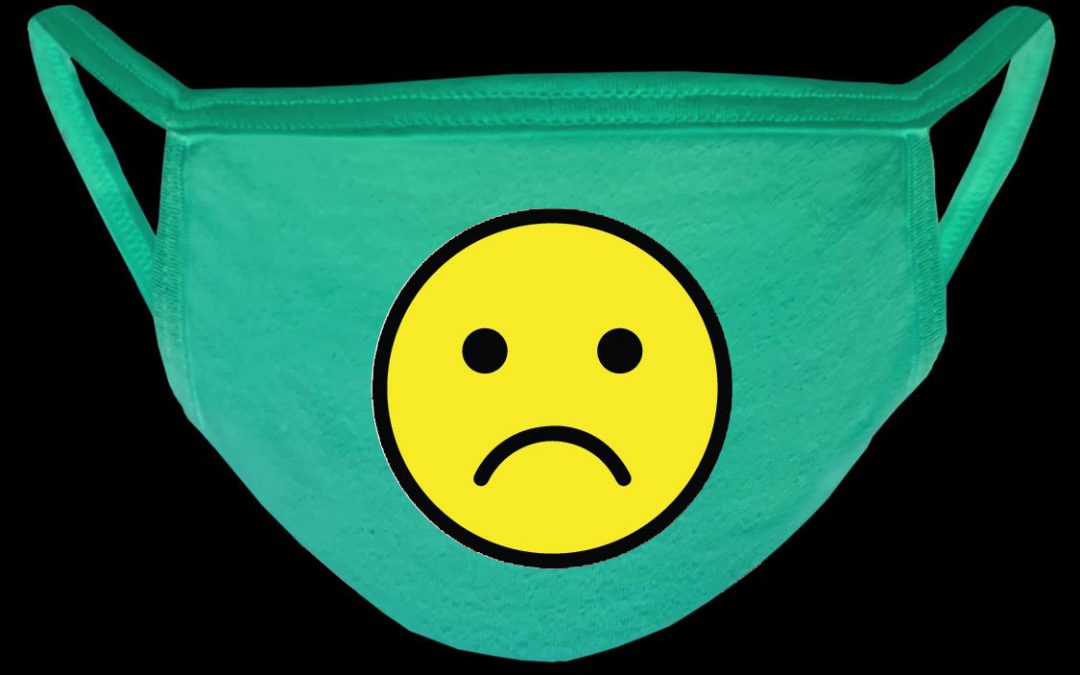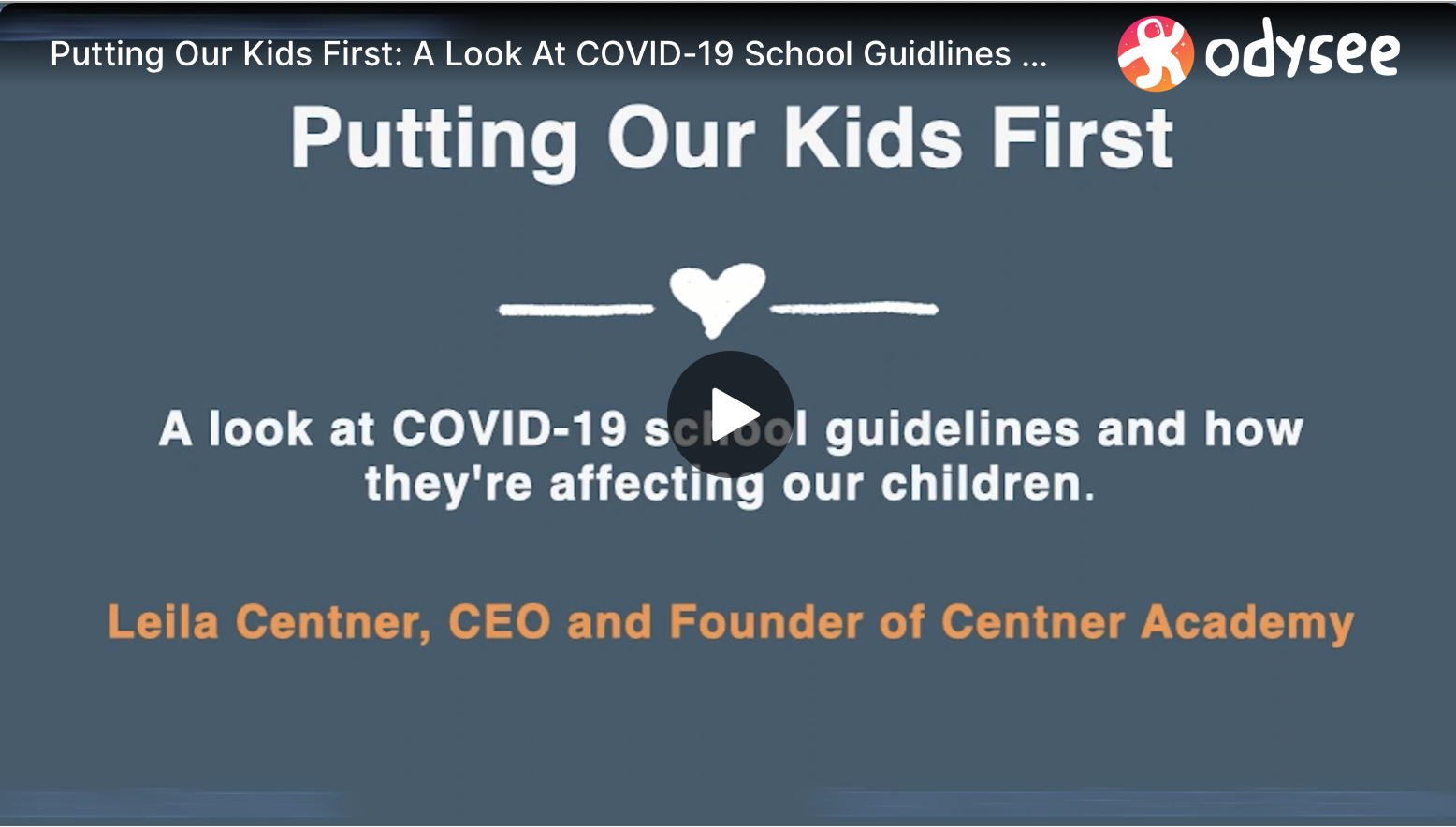STORY AT-A-GLANCE
- It became clear early on that children and teens are at very low risk from COVID-19, with a 99.997% survival
- Masking, social distancing and virtual schooling persisted nonetheless, even as experts sounded the alarm about their probable implications, including physical, psychological and behavioral adverse effects
- Speaking at the Advanced Medicine Conference May 30, 2021, Leila Centner, chief executive officer and co-founder of Centner Academy in Miami, Florida, detailed many of the risks posed to children by COVID-19 school guidelines, along with the inconsistencies and lack of research behind their use
- A number of states have now banned mask mandates in schools, often as the result of public outcry; Stand for Health Freedom has a form you can use to ask your governor and department of education to lift harmful COVID-19 guidelines in your child’s school so students can return to normal, healthy learning environments
Children may end up being among the greatest casualties of the COVID-19 pandemic — not because of the virus but due to the restrictions placed upon them over the last year, which have interrupted mental, social and emotional development in unprecedented ways. It became clear early on that children and teens are at very low risk from COVID-19, with a 99.997% survival.1
Masking, social distancing and virtual schooling persisted nonetheless, even as experts sounded the alarm about their probable implications, including physical, psychological and behavioral adverse effects.2
Speaking at the Advanced Medicine Conference May 30, 2021, Leila Centner, chief executive officer and co-founder of Centner Academy in Miami, Florida, detailed many of the risks posed to children by COVID-19 school guidelines, along with the inconsistencies and lack of research behind their use.3
Centner made headlines in April 2021 after informing teachers that if they’ve been vaccinated for COVID-19 they can’t work at the school due to the unknown effects the experimental drug could be having on unvaccinated individuals.4
CDC COVID Guidelines May Be Harming Children
In the U.S., the Centers for Disease Control and Prevention’s operational strategy for K-to-12 schools continues to recommend the “consistent use of prevention strategies, including universal and correct use of masks and physical distancing.”5
Any intervention, including mask usage, which may cause adverse effects, must have benefits that outweigh the risks, but no research has been done to ensure that universal masking of children is safe or effective. Despite this, one of the two key prevention strategies recommended by the CDC for schools to prevent the transmission of SARS-CoV-2 is the requirement for “universal and correct use of masks.”
The Centner Academy did not require masks at any point during the pandemic, but did not have any hospitalizations from COVID-19. While they did have cases, most that occurred among students were asymptomatic, Centner said.
It’s important to note that Dr. Anthony Fauci, director of the National Institute for Allergy and Infectious Diseases (NIAID), has flip-flopped on the usefulness and need for masks multiple times, from “Americans shouldn’t be wearing masks because they don’t work,” to masks definitely work and should be worn by everyone, to you should wear not just one but two, for safe measure.
He’s gone from promising a mask-free existence once the vaccine rolls out, to insisting mask-wearing is still necessary after vaccination because vaccine-resistant variants might pop up, to proposing we might need to wear masks every flu season in perpetuity. Yet, signs are increasing that masks do pose risks, including to children.
At the University of Witten/Herdecke in Germany, an online registry was set up where parents, doctors, pedagogues and others can enter their observations about mask wearing in children. Using data on 25,930 children,6 with an average mask wearing time of 270 minutes per day, 24 health issues were reported.7 A majority of parents (68%) reported impairments in their children due to wearing a mask. They recorded symptoms that:8
“… included irritability (60%), headache (53%), difficulty concentrating (50%), less happiness (49%), reluctance to go to school/kindergarten (44%), malaise (42%), impaired learning (38%) and drowsiness or fatigue (37%).”
They also found 29.7% reported feeling short of breath, 26.4% being dizzy and 17.9% were unwilling to move or play.9 Hundreds more experienced “accelerated respiration, tightness in chest, weakness and short-term impairment of consciousness.” The researchers concluded:10
“The frequency of the registry’s use and the spectrum of symptoms registryed indicate the importance of the topic and call for representative surveys, randomized controlled trials with various masks and a renewed risk-benefit assessment for the vulnerable group of children.”
Masks Cause Anxiety, Panic Attacks, Headaches and More
Centner’s presentation featured Dr. Jim Meehan, an ophthalmologist and preventive medicine specialist who has performed more than 10,000 surgical procedures and is also a former editor of the medical journal Ocular Immunology and Inflammation. He has conducted an evidence-based scientific analysis on masks, which shows that not only should healthy people not be wearing masksbut they could be harmed as a result.11
In the video, Meehan warned universal masking of children is experimental and the safety hasn’t been proven. Further, he says the official change in guidelines from first telling people to avoid mask-wearing to later mandating it in many places wasn’t the result of “new science” but rather was the result of lobbying.
In his practice, Meehan said he’s seen horrendous harm as a result, with dozens of children facing health problems including:12
| Anxiety | Panic attacks | Struggling to breathe |
| Facial rashes | Infections | Dental problems |
| Oral ulcers | Cavities | Throat abscesses |
Meehan previously compiled 17 ways that masks can cause harm, which include:13
| Medical masks adversely affect respiratory physiology and function | Medical masks lower oxygen levels in the blood |
| Medical masks raise carbon dioxide levels in the blood | SAR-CoV-2 has a “furin cleavage” site that makes it more pathogenic, and the virus enters cells more easily when arterial oxygen levels decline, which means wearing a mask could increase COVID-19 severity |
| Medical masks trap exhaled virus in the mouth/mask, increasing viral/infectious load and increasing disease severity | SARS-CoV-2 becomes more dangerous when blood oxygen levels decline |
| The furin cleavage site of SARS-CoV-2 increases cellular invasion, especially during low blood oxygen levels | Cloth masks may increase the risk of contracting COVID-19 and other respiratory infections |
| Wearing a face mask may give a false sense of security | Masks compromise communications and reduce social distancing |
| Untrained and inappropriate management of face masks is common | Masks worn imperfectly are dangerous |
| Masks collect and colonize viruses, bacteria and mold | Wearing a face mask makes the exhaled air go into the eyes |
| Contact tracing studies show that asymptomatic carrier transmission is very rare | Face masks and stay at home orders prevent the development of herd immunity |
| Face masks are dangerous and contraindicated for a large number of people with pre-existing medical conditions and disabilities |
Centner also featured Dr. Lawrence Palevsky, a New York pediatrician, who warned that masks could be harming children’s brain development. By promoting fear, stress, panic and anxiety, it keeps children in the “fight or flight response” driven by the brain. This influences the capacity of development and higher functions of the brain.14
Children’s Mental Health Is Suffering
Rates of suicide in youth increased during the COVID-19 pandemic in 2020 compared to 2019. Significantly higher rates of suicide-related behaviors, including suicide ideation and suicide attempts, corresponded to times of increased COVID-19-related concerns, according to research published in the journal Pediatrics.15 Social isolation imposed during the pandemic has been cited as reason for pushing some children with mental health issues “over the edge.”16
Centner also highlighted a May 2021 announcement by the U.S. Department of Health and Human Services (HHS), through the Health Resources and Services Administration (HRSA), which will make $14.2 million from the American Rescue Plan available to expand mental health care access to children.17 In a news release, HHS Secretary Xavier Becerra said:18
“Children are struggling with a range of emotional and behavioral challenges arising from the COVID-19 pandemic, especially those in families with lower incomes or who face other obstacles to health care.”
It’s estimated that 22% of U.S. children between the ages of 3 and 17 are suffering with a mental, emotional, developmental or behavioral condition.19
Dr. Peter Breggin, a Harvard-trained psychiatrist, was also featured in Centner’s presentation. A former consultant at the National Institute of Mental Health, Breggin has called COVID-19 restrictions placed on children a “crime against humanity” and an experiment in social engineering aimed at creating docile pawns in a “global predatory system.” Speaking with Wilson County News, Breggin said:20
“I was a kid during World War II, and I never saw anything like these even back then. Americans have never been docile like this, even in wartime. And the more you can mask a child, the less they can connect, and less they connect the more docile they become.
Similarly, the more that you teach them to do absurd humiliating things, the more they give in to anything you demand. Ultimately, the more freedom you take away from them as children, the more you can take away their freedom as adults.”
States Are Banning Masks in Schools
A number of states have now banned mask mandates in schools, often as the result of public outcry. An executive order prohibiting government entities from mandating masks in Texas took effect June 4, 2021.21
A similar bill was enacted in Iowa in May 2021, which also bans school mask mandates. In a statement, Iowa Governor Kim Reynolds stated, “The state of Iowa is putting parents back in control of their child’s education and taking greater steps to protect the rights of all Iowans to make their own health care decisions.”22
In similar moves, Arkansas plans to ban mask requirements for schools by the end of summer 2021,23 and South Carolina issued an executive order that allows parents to opt their children out of mask requirements at school.24
A number of Wisconsin school districts have also lifted mask requirements,25 while Florida’s education commissioner Richard Corcoran sent a memo to district superintendents stating face masks should be voluntary for the 2021-22 school year because “they serve no remaining good at this point in our schools.”26
Indeed, even during the height of the pandemic, a CDC study found mask requirements for studentshad little effect on COVID-19 incidence at Georgia schools, while improved ventilation, such as opening a window, reduced cases more than mask mandates for staff and teachers.27
Take a Stand for Health Freedom
If you’d like to get involved, Stand for Health Freedom, a nonprofit organization dedicated to protecting basic human rights, constitutional rights and parental rights, has a form you can use to ask your governor and department of education to lift harmful COVID-19 guidelines in your child’s school so students can return to normal, healthy learning environments.28
They’ve also created the Putting Our Kids First presentation to take to your school board officials, which contains data and video testimony from doctors, parents and children about the harms of COVID restrictions in schools.29 Many of the school districts that have lifted mask requirements have done so in response to requests from parents and the public, showing that every person has the ability to make a difference in their community.
- 1 NBC 26 October 20, 2020
- 2, 7, 9 Montana Daily Gazette, January 25, 2021
- 3, 12 Odysee June 1, 2021
- 4 Slate April 27, 2021
- 5 U.S. CDC May 15, 2021
- 6, 8, 10 Research Square, 2021; doi.org/10.21203/rs.3.rs-124394/v2
- 11, 13 MeehanMd.com November 20, 2020
- 14 Center for Early Childhood Mental Health Consultation, Stress and the Developing Brain
- 15 Pediatrics March 2021
- 16 Penn State Health February 3, 2021
- 17, 18, 19 HHS.gov May 20, 2021
- 20 Wilson County News March 9, 2021
- 21 Office of the Texas Governor May 18, 2021
- 22 Iowa Public Radio May 20, 2021
- 23 ABC News May 12, 2021
- 24 WBTV May 11, 2021
- 25 Wisconsin Public Radio April 28, 2021
- 26 Orlando Sentinel April 15, 2021
- 27 U.S. CDC, Morbidity and Mortality Weekly Report May 21, 2021
- 28 Stand for Health Freedom, Act Now: Ask your governor and dept. of education to lift COVID-19 restrictions in schools
- 29 Stand for Health Freedom, Putting Our Kids First presentation
– Come Like Us on Facebook – Check us out on Instagram – Sign Up for our Newsletter –
Subscribe to our New NOW Youtube Channel




 www.mercola.com
www.mercola.com








